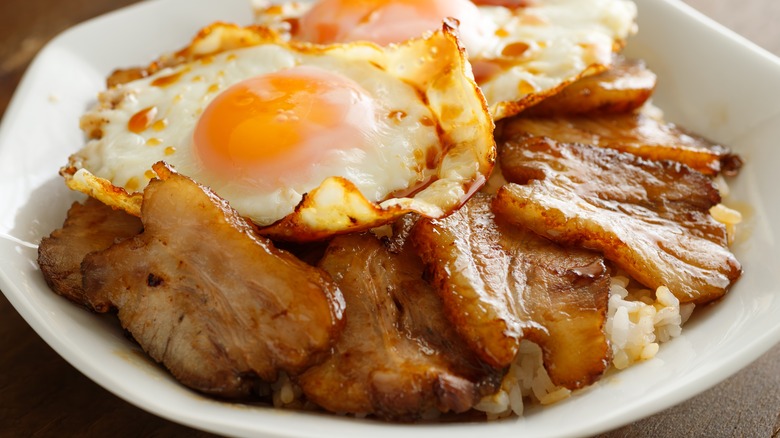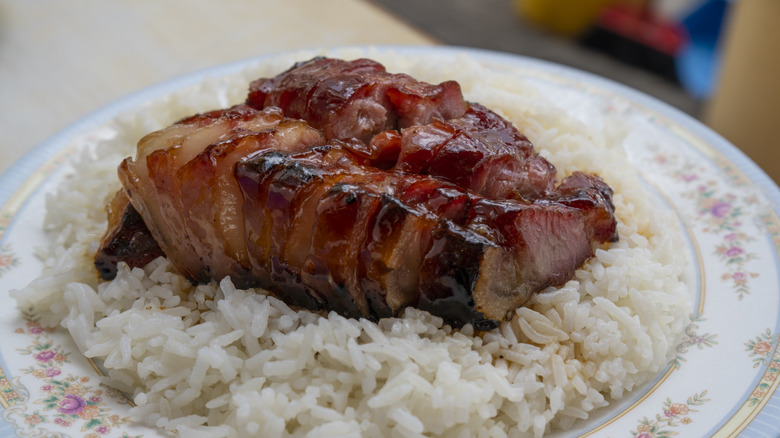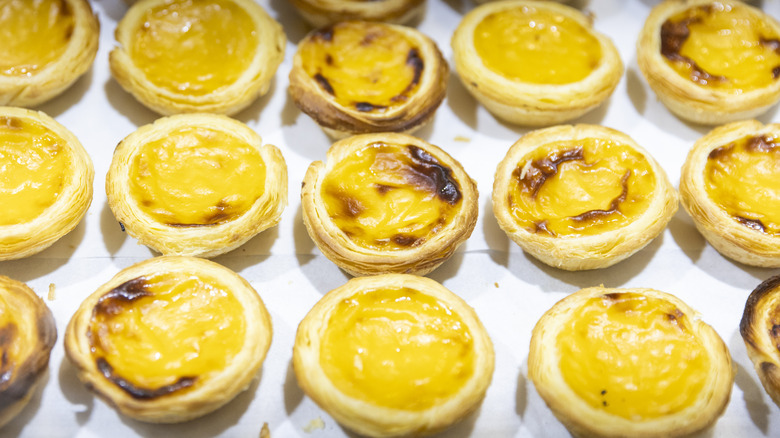The Glamorous Origin Of Hong Kong's Pork & Egg Rice
If you've ever had a bowl of "Sorrowful Rice," you'll know that the only tears it will bring to your eyes are those of joy. This Hong Kong specialty, called gam yin siu wan fan in Cantonese, is one of the most famous dishes in town. It's a simple pork and egg rice dish that gets its fame as much from its easy and pleasurable taste as from its fascinating backstory.
Sorrowful Rice wasn't invented for a restaurant or a cookbook, nor was it thrown together out of necessity by a hungry line cook. It was invented by a cook, yes — but a fictional one. The dish comes from the 1996 movie " The God of Cookery." Written, directed, and starred in by Stephen Chow, the film centers on the fall from grace (and inevitable return to it) of a chef, also named Stephen Chow, after he loses his title as the God of Cookery. Assisted by a street vendor, Chow eventually reclaims his celebrity with a dish of Sorrowful Rice.
What's so sorrowful about this rice?
Sometimes a name is enough to get people invested in a dish, and Sorrowful Rice is a hard one to beat. It's a reference to the novel " The Return of the Condor Heroes," in which a martial arts champion names his signature move, Melancholic Palms, after his deceased wife. Similarly, Sorrowful Rice gets its name in "The God of Cookery" from a tragedy. Chow's sidekick in the film, played by Karen Mok, saves his life but dies in the process. When he finally presents the dish she inspired to a panel of judges at the end of the movie, the dish acts as a symbol of his transformation, and he names it in her honor.
The dish has taken on a life of its own since the movie left its mark in the 90s, and it's now easy to find just about anywhere in Hong Kong. It's made from char siu-style pork tenderloin — also known as Chinese BBQ — rice, egg, and often onion, but there are many variations.
Other popular Hong Kong dishes
Sorrowful Rice is only one of the incredible dishes that can be found in Hong Kong. This city is beloved by gourmets worldwide, and not for nothing. Hong Kong is home to more than 15,000 restaurants, ranging from humble street food spots to Michelin-starred establishments (75 of them, to be exact). Its food showcases a mouthwatering clash of cultures, with influences from traditional Cantonese cooking, as well as Japanese and Korean influences, and Western, predominantly British, ones.
Many of its popular dishes are the result of cultural exchange, like its egg tarts, which likely came to Hong Kong courtesy of Macau, adopting them from Portuguese pastéis de nata. And, of course, Hong Kong milk tea, which evolved from the British practice of adding milk to tea, but commonly uses evaporated milk or condensed milk. Other popular dishes include "phoenix talons," i.e., chicken feet; claypot rice; snake soup; roast goose; and fluffy pineapple buns, with their crisp outer layer of sugar.



